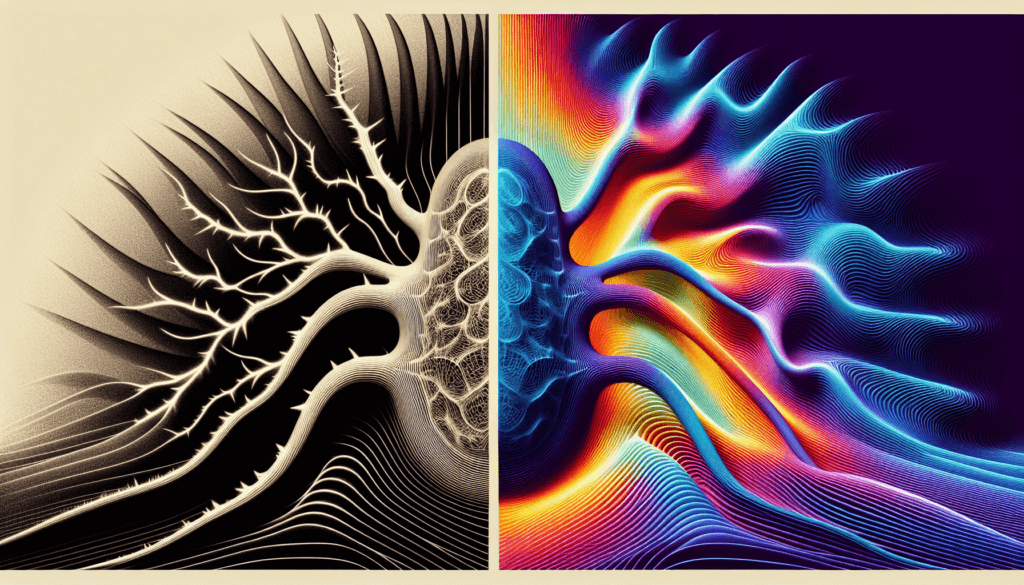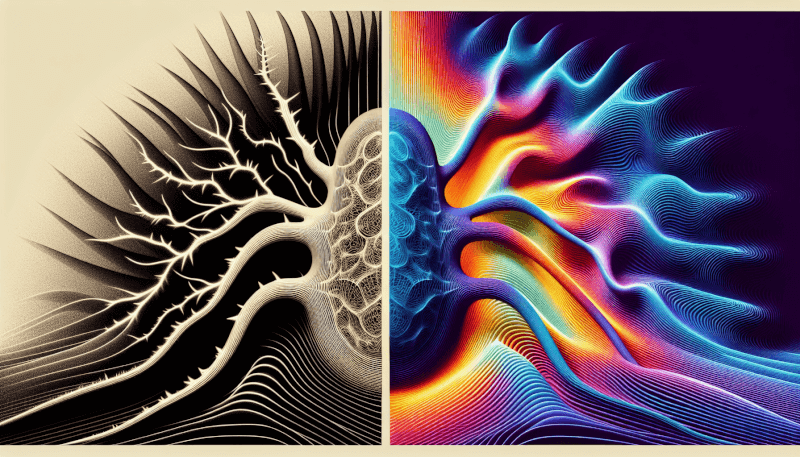Have you ever heard of PEMF therapy and its potential benefits for those suffering from Lyme disease? In this article, we will explore the fascinating connection between PEMF and Lyme, discussing how this innovative therapy can potentially alleviate symptoms and improve overall well-being. Join us as we uncover the science behind PEMF and its potential to provide relief for individuals living with Lyme disease.

Understanding Lyme Disease
Definition and Symptoms
Lyme disease is a tick-borne illness caused by the bacterium Borrelia burgdorferi. It is the most common vector-borne disease in the United States, with thousands of cases reported each year. The symptoms of Lyme disease can vary and may initially appear similar to the flu. However, if left untreated, it can progress to more serious complications, affecting the joints, heart, and nervous system.
The most common symptoms of Lyme disease include fever, fatigue, muscle aches, joint pain, and swollen lymph nodes. Additionally, some individuals may experience neurological symptoms such as headaches, dizziness, and problems with memory and concentration. The characteristic bull’s-eye rash, known as erythema migrans, often appears at the site of the tick bite, but it may not be present in all cases.
Causes and Transmission
Lyme disease is primarily caused by the bite of black-legged ticks infected with the bacterium Borrelia burgdorferi. These ticks, commonly known as deer ticks, are typically found in wooded and grassy areas, particularly in regions with high deer populations. The transmission of Lyme disease occurs when an infected tick attaches itself to the skin and feeds on the host’s blood.
It is important to note that not all tick bites lead to Lyme disease. The chances of transmission increase when the tick remains attached for more than 36 hours. Early removal of the tick and proper identification can help reduce the risk of infection. It is crucial to be aware of the signs and symptoms of Lyme disease, especially if one has spent time in tick-prone areas.
Current Treatments
Current treatment options for Lyme disease primarily involve the use of antibiotics. The most commonly prescribed antibiotics for early-stage Lyme disease include doxycycline, amoxicillin, and cefuroxime. These medications are generally effective in eliminating the infection when administered early.
In cases where Lyme disease progresses to later stages or presents with persistent symptoms, intravenous antibiotic therapy may be necessary. This more intensive treatment aims to eliminate the bacteria and alleviate the symptoms associated with Lyme disease. However, it is important to note that the effectiveness of antibiotic treatment can vary among individuals, and some patients may experience prolonged symptoms or chronic Lyme disease.
What is PEMF?
Definition and Principles
PEMF, or Pulsed Electromagnetic Field therapy, is a non-invasive and drug-free approach that utilizes electromagnetic fields to generate therapeutic effects within the body. This form of therapy has been used for decades to promote healing and relieve pain in various medical conditions.
PEMF devices emit low-frequency electromagnetic fields that can penetrate deep into the body’s tissues, stimulating cellular activity and promoting overall wellness. The principles underlying PEMF therapy involve the interaction between these electromagnetic fields and the body’s own bioelectromagnetic activities.
Applications in Medicine
PEMF therapy has a wide range of applications in the field of medicine. It has been used to accelerate bone healing, reduce inflammation, and alleviate pain in musculoskeletal conditions such as fractures, osteoarthritis, and fibromyalgia. Additionally, PEMF therapy has shown promising results in promoting wound healing and tissue regeneration.
The beneficial effects of PEMF therapy are attributed to its ability to enhance cellular metabolism, increase blood flow, and stimulate the production of growth factors. These processes contribute to tissue repair, reduce pain, and improve overall function. With its non-invasive nature and minimal side effects, PEMF therapy has gained recognition as a safe and effective treatment modality.
PEMF for Lyme Disease
Potential Benefits
PEMF therapy has emerged as a potential adjunct therapy for Lyme disease. Although it is not a substitute for antibiotic treatment, PEMF therapy may provide additional benefits in relieving symptoms and promoting healing.
One of the primary benefits of PEMF therapy for Lyme disease is its ability to reduce inflammation. Chronic inflammation is a common underlying factor in Lyme disease, contributing to the persistence of symptoms. By modulating the body’s inflammatory response, PEMF therapy can potentially alleviate pain, swelling, and joint stiffness associated with Lyme disease.
Another potential benefit of PEMF therapy is its positive impact on the immune system. Lyme disease can weaken the immune response, making the body more susceptible to infections and delaying the recovery process. PEMF therapy has been shown to enhance immune function and stimulate the production of immune cells, potentially aiding in the eradication of the Lyme bacteria.
Mechanism of Action
The mechanism of action behind the beneficial effects of PEMF therapy in Lyme disease is multifaceted. PEMF therapy acts at the cellular level, influencing processes such as cellular signaling, gene expression, and enzyme activity.
At the molecular level, PEMF therapy has been found to modulate inflammatory mediators, such as cytokines, and reduce the production of reactive oxygen species (ROS). By regulating these molecules, PEMF therapy can help mitigate the inflammatory response and oxidative stress associated with Lyme disease.
PEMF therapy also influences cellular functions, such as ion exchange and membrane permeability, which play crucial roles in maintaining cellular homeostasis. By enhancing cellular metabolism and optimizing cellular function, PEMF therapy supports the body’s natural healing processes and promotes overall wellness.
Research and Studies
While the use of PEMF therapy for Lyme disease is a relatively recent development, there have been promising studies exploring its potential efficacy.
One study published in the journal “Bioelectromagnetics” examined the effects of PEMF therapy on the viability of Borrelia burgdorferi bacteria in vitro. The results demonstrated that PEMF treatment significantly reduced the viability of the bacteria, suggesting its potential as an adjunct therapy for Lyme disease.
Another study published in the “Journal of Clinical Rheumatology” investigated the use of PEMF therapy in patients with Lyme arthritis. The study reported a significant reduction in pain and improvement in joint mobility after PEMF treatment, indicating its potential for symptom relief in Lyme-related arthritis.
While these studies provide promising preliminary evidence, further research is needed to establish the efficacy and optimal protocols for PEMF therapy in Lyme disease treatment.
Case Studies
Patient 1: Response to PEMF Treatment
A case study involving a Lyme disease patient demonstrated a positive response to PEMF therapy. The patient, who had been experiencing persistent fatigue, joint pain, and cognitive impairments despite antibiotic treatment, underwent a series of PEMF treatment sessions.
After several weeks of treatment, the patient reported a significant reduction in fatigue, improved cognitive function, and a decrease in joint pain. These improvements allowed the patient to regain their quality of life and resume normal daily activities.
Patient 2: Long-Term Effects of PEMF
Another case study examined the long-term effects of PEMF therapy in a Lyme disease patient who had completed antibiotic treatment but continued to experience residual symptoms. The patient underwent regular PEMF sessions over a six-month period.
During this time, the patient experienced a gradual reduction in symptoms, including fatigue, joint pain, and brain fog. By the end of the six-month period, the patient reported a significant improvement in overall health and a return to normal functioning.
These case studies highlight the potential of PEMF therapy as a complementary treatment option for Lyme disease, especially in cases where antibiotic treatment alone may not completely resolve symptoms.

Choosing the Right PEMF Device
Factors to Consider
When considering PEMF therapy for Lyme disease, selecting the right PEMF device is crucial to ensure safety and effectiveness. Here are some factors to consider:
-
Frequency Range: Different PEMF devices emit electromagnetic fields at varying frequencies. It is essential to choose a device that offers a frequency range suitable for the desired therapeutic effects.
-
Intensity Levels: The intensity of the electromagnetic field is another critical factor to consider. Higher intensity does not necessarily equate to better results, as individual sensitivities may vary. It is advisable to start with lower intensity levels and gradually increase as tolerated.
-
Programs and Settings: Look for a PEMF device that offers a variety of preset programs or adjustable settings to cater to specific needs. Different intensity and frequency combinations may be beneficial for different symptoms or stages of Lyme disease.
-
Safety Features: Ensure that the PEMF device complies with safety standards and regulations. Look for devices with built-in safety features, such as automatic shut-off and overheating protection.
Consultation with a Healthcare Professional
Before starting PEMF therapy for Lyme disease, it is crucial to consult with a healthcare professional familiar with both Lyme disease treatment and PEMF therapy. They can assess individual needs, provide guidance on the appropriate device and treatment protocol, and monitor progress throughout the therapy.
A healthcare professional can also help identify any potential contraindications or risks associated with PEMF therapy based on the individual’s medical history and current health condition. This personalized approach ensures the safe and effective implementation of PEMF therapy as an adjunct treatment for Lyme disease.
Implementing PEMF Therapy for Lyme
Frequency and Duration of Treatment
The frequency and duration of PEMF therapy for Lyme disease can vary depending on the individual’s specific needs and response to treatment. It is recommended to start with shorter treatment sessions, gradually increasing the duration as tolerated.
In general, for Lyme disease, daily PEMF sessions ranging from 20 minutes to an hour can be beneficial. However, it is essential to monitor individual responses and adjust the treatment frequency and duration accordingly.
It is important to note that PEMF therapy is not a one-time solution. Consistency and regularity in treatment are crucial to achieve optimal results. Long-term, sustained PEMF therapy may be necessary to manage chronic symptoms associated with Lyme disease effectively.
Combination with Other Treatments
PEMF therapy can be used in conjunction with traditional treatments for Lyme disease, such as antibiotics and supportive therapies. It is essential to maintain open communication with healthcare professionals involved in the management of Lyme disease to ensure the compatibility and coordination of treatment modalities.
Combining PEMF therapy with other treatments, such as physical therapy, acupuncture, or nutritional support, may provide a comprehensive approach to address the multi-faceted nature of Lyme disease. This integrated approach aims to maximize the potential benefits and improve overall outcomes.
Safety and Precautions
Potential Side Effects
PEMF therapy is generally considered safe with minimal side effects. Most individuals tolerate the treatment well, experiencing only a slight warming or tingling sensation during the session.
However, in some cases, individuals may experience transient discomfort, such as muscle soreness or stiffness, after the PEMF session. These effects are typically mild and resolve within a short period. Adjusting the intensity levels or duration of PEMF sessions can help mitigate these potential side effects.
It is important to follow the manufacturer’s guidelines and healthcare professional’s recommendations to ensure safe and appropriate use of PEMF devices. If any unexpected or concerning side effects occur, it is advisable to consult a healthcare professional promptly.
Contradictions and Risk Factors
While PEMF therapy is generally safe, certain contraindications and risk factors should be considered. Individuals with the following conditions or situations should exercise caution or avoid using PEMF devices:
-
Pregnancy: Pregnant individuals should consult with their healthcare professional before using PEMF devices, as their safety during pregnancy has not been extensively studied.
-
Pacemakers and Implantable Devices: The strong electromagnetic fields emitted by PEMF devices may interfere with the proper functioning of pacemakers or other implantable medical devices. It is essential to consult with a healthcare professional before using PEMF therapy if you have any implantable devices.
-
Active Infections or Cancer: In some cases, the use of PEMF therapy may not be suitable for individuals with active infections or certain types of cancer. A healthcare professional can provide guidance based on individual circumstances.
-
Seizure Disorders: Individuals with a history of seizure disorders should exercise caution when considering PEMF therapy. Strong electromagnetic fields can potentially trigger seizures in susceptible individuals.
It is important to disclose all relevant health information to the healthcare professional before starting PEMF therapy to ensure its safe and appropriate use.
Personal Testimonials
Lyme Patients’ Experiences with PEMF
Personal testimonials from Lyme disease patients who have incorporated PEMF therapy into their treatment regimens provide valuable insights into the potential benefits and challenges they have faced.
Many Lyme patients have reported improvements in symptoms such as fatigue, joint pain, and cognitive impairment after incorporating PEMF therapy into their treatment plans. They have described experiencing increased energy levels, reduced pain, and improved mental clarity, enabling them to regain control over their lives.
However, it is essential to remember that personal experiences may vary, and not all individuals may respond to PEMF therapy in the same way. Each treatment plan should be tailored to the individual’s specific needs and monitored by healthcare professionals.
Positive Outcomes and Challenges
While personal testimonials often highlight the positive outcomes of PEMF therapy for Lyme disease, it is important to acknowledge the challenges that may arise during treatment.
Some patients may experience a temporary aggravation of symptoms, known as a “Herxheimer reaction,” as a result of the release of toxins during PEMF therapy. These reactions typically resolve with time and can be managed by adjusting the treatment intensity or duration.
Additionally, access to PEMF therapy and financial considerations may present challenges for some individuals. It is important to discuss these factors with healthcare professionals and explore available resources, such as financial assistance programs or rental options for PEMF devices.
Future Directions and Potential
Advancements in PEMF Technology
As research and technology continue to advance, so does the potential of PEMF therapy for Lyme disease. The development of more portable and user-friendly PEMF devices allows for convenient home use, enhancing accessibility and encouraging regular treatment sessions.
Advancements in PEMF technology also include the exploration of personalized treatment protocols, where the frequency, intensity, and duration of therapy can be tailored to individual needs. Such customization has the potential to optimize treatment outcomes and improve patient satisfaction.
Research Areas and Innovation
The field of PEMF therapy for Lyme disease is still evolving, and ongoing research aims to further explore its potential benefits and mechanisms of action.
Areas of research include investigating optimal treatment protocols, determining the long-term effects of PEMF therapy for Lyme disease, and understanding the specific mechanisms by which PEMF influences the immune system and inflammation processes.
Innovation in PEMF technology continues to pave the way for novel applications and treatment approaches. Ongoing studies and technological advancements offer hope for further advancements in the management of Lyme disease.
Conclusion
PEMF therapy shows promise as an adjunct therapy for Lyme disease, providing potential benefits in reducing inflammation, supporting the immune system, and alleviating symptoms. While not a replacement for antibiotic treatment, PEMF therapy offers a non-invasive and drug-free approach to enhance healing and promote overall wellness.
Personal testimonials and case studies highlight the positive outcomes and potential of PEMF therapy in conjunction with traditional treatments for Lyme disease. However, further research and exploration are needed to establish its efficacy and optimal protocols.
By considering the factors involved in choosing the right PEMF device, consulting with healthcare professionals, and implementing PEMF therapy in a safe and appropriate manner, individuals with Lyme disease can potentially benefit from this promising treatment modality.
Continued research, technological innovations, and exploration of personalized treatment protocols will contribute to the future directions and potential of PEMF therapy for Lyme disease. These advancements offer hope for improved outcomes and enhanced quality of life for individuals affected by this complex condition.


